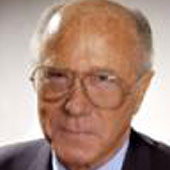Bin Laden and Mullah Omar: No Brothers in Arms
Would the return of the Taliban in Afghanistan really mean the next coming of al Qaeda?
February 24, 2010
Taliban’s Mullah Omar and bin Laden are not Tweedledee and Tweedledum, nor are they twins who evolved a bizarre master-slave relationship. And they are also not Jekyll and Hyde, an altruistically well-meaning doctor who becomes a monster bent on lust and destruction.
The ideological and personality differences between bin Laden and Mullah Omar have long been misunderstood. Taliban is an indigenous Afghan movement made up of mostly ethnic Pashtuns, midwifed by Pakistan’s ISI intelligence agency to put an end to a civil war and fill a vacuum left by the Soviet retreat from Afghanistan.
Mullah Omar consolidated his power with the title of Amir-ul-Mumineen (Supreme Commander of the Faithful) in the “Islamic Emirate” of Afghanistan, a medieval theocratic dictatorship and pitiless inquisition.
Bin Laden, expelled from Sudan in 1996 by combined U.S., European and Saudi pressure, opted to return to his old stomping grounds in Afghanistan while Mullah Omar was still consolidating his civil war victory.
Bin Laden, the ambitious global braggadocio, was not what Mullah Omar the recluse had in mind. It was a shotgun wedding. Mullah Omar resented the worldwide publicity bin Laden was getting from foreign journalists in 1996 through 1999 and warned bin Laden to cut it out.
Mullah Omar and officials in his immediate entourage made clear to this reporter and my colleague Ammar Turabi that they were unhappy with bin Laden’s activities when we interviewed him in 2001.
Any fatwa issued by bin Laden declaring jihad, or holy war, against the United States and ordering Muslims to kill Americans was “null and void,” Mullah Omar said.
“He is not entitled to issue fatwas,” he explained, “as he did not complete the mandatory 12 years of Koranic studies to qualify for the position of mufti.”
The then-41-year-old (now 50) mullah said the “Islamic Emirate had offered the United States and the United Nations to place international monitors to observe Osama bin Laden pending the resolution of the case, but so far we have received no reply.”
Mullah Omar told us the Taliban regime would like to “resolve or dissolve” the bin Laden issue. In return, he expected the United States to establish a dialogue to work out an acceptable solution that would lead to “an easing and then lifting of UN sanctions that are strangling and killing the people of the emirate.”
The one-eyed, six-foot six-inch, five-times-wounded veteran of the war against the Soviet occupation in the 1980s also said bin Laden was not allowed any further contact with the media or foreign government representatives. Bin Laden himself swore fealty to Mullah Omar in a statement published the previous April (2001).
The 1998 terrorist bombings of U.S. embassies in Tanzania and Kenya triggered U.S. retaliatory cruise-missile strikes against al Qaeda’s Afghan training camps. Mullah Omar was rattled and feared his regime might be next.
But bin Laden swore on the Koran, according to one of Mullah Omar’s ranking deputies, that he had had nothing to do with those bombings. Then came the 2000 attack on the USS Cole in Aden, Yemen, and bin Laden pleaded he was not responsible for what others did in his name.
Mullah Omar pointed out that the Koran forbids the taking of the lives of innocent women, children and old people in strife, conflict and war and that “the perpetrators are criminals and should be so judged.”
Mullah Omar reminded us that bin Laden is “a hero of the war against the Soviet occupation of our country,” and “he does not operate against anyone from the soil of Afghanistan. We requested that of him. We have his verbal and written pledge that he will abide by it in order that the relations between the Islamic Emirate and other nations are not affected.”
The attacks on the World Trade Center’s twin towers and the Pentagon took place three months later.
In the words of the late Ajmal Khattak — a prominent Afghan tribal elder, who knew the Afghanistan-Pakistan border area better than most — all of this points to “deep fissures behind a patina of Islamic unity” between Taliban’s Mullah Omar and al Qaeda’s bin Laden. They have been there since bin Laden arrived in 1996, but were never exploited.
Mullah Omar was prepared to turn bin Laden over to a Shariah court in a neutral Muslim country. But the incoming George W. Bush Administration team had other priorities.
